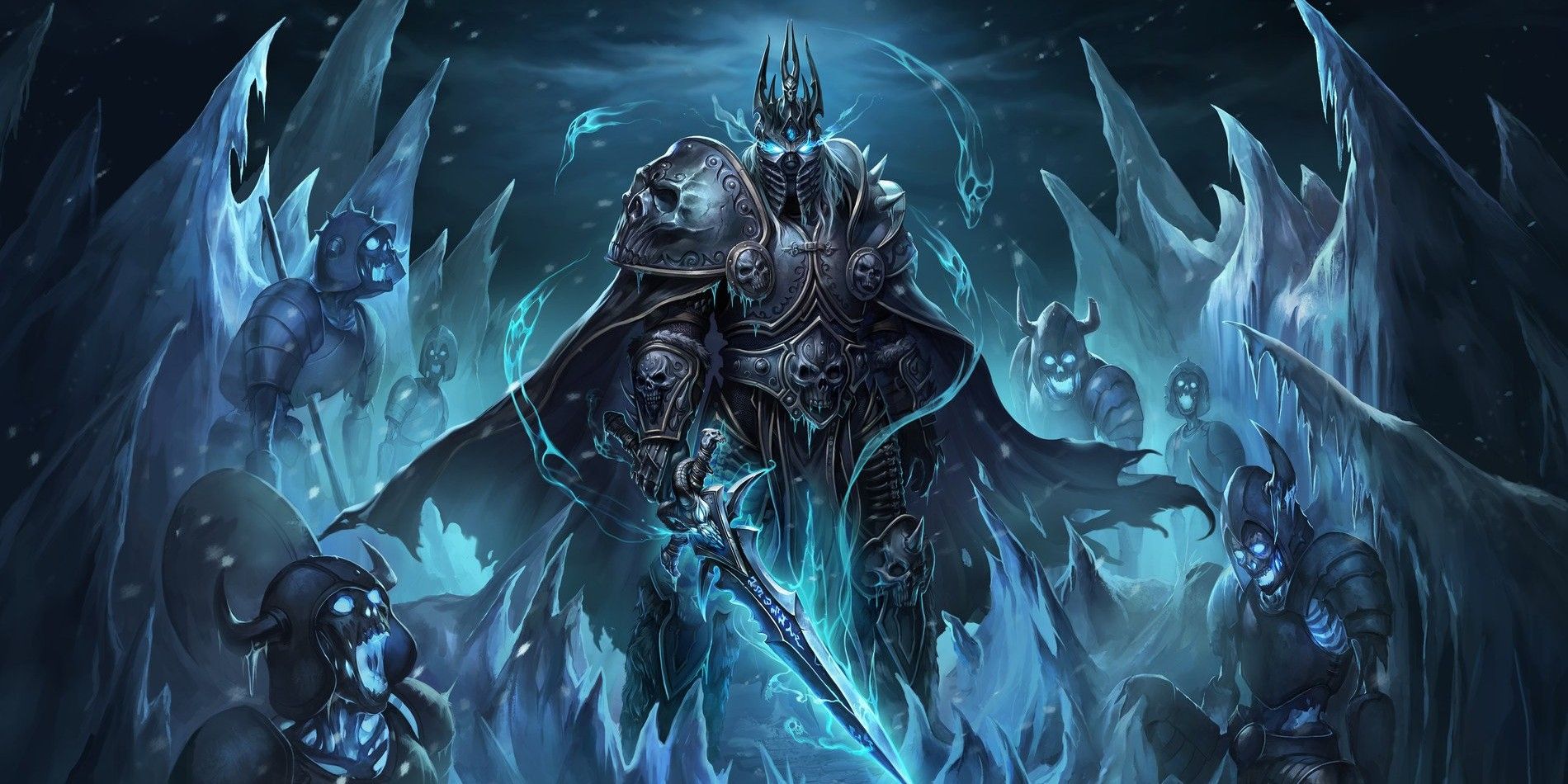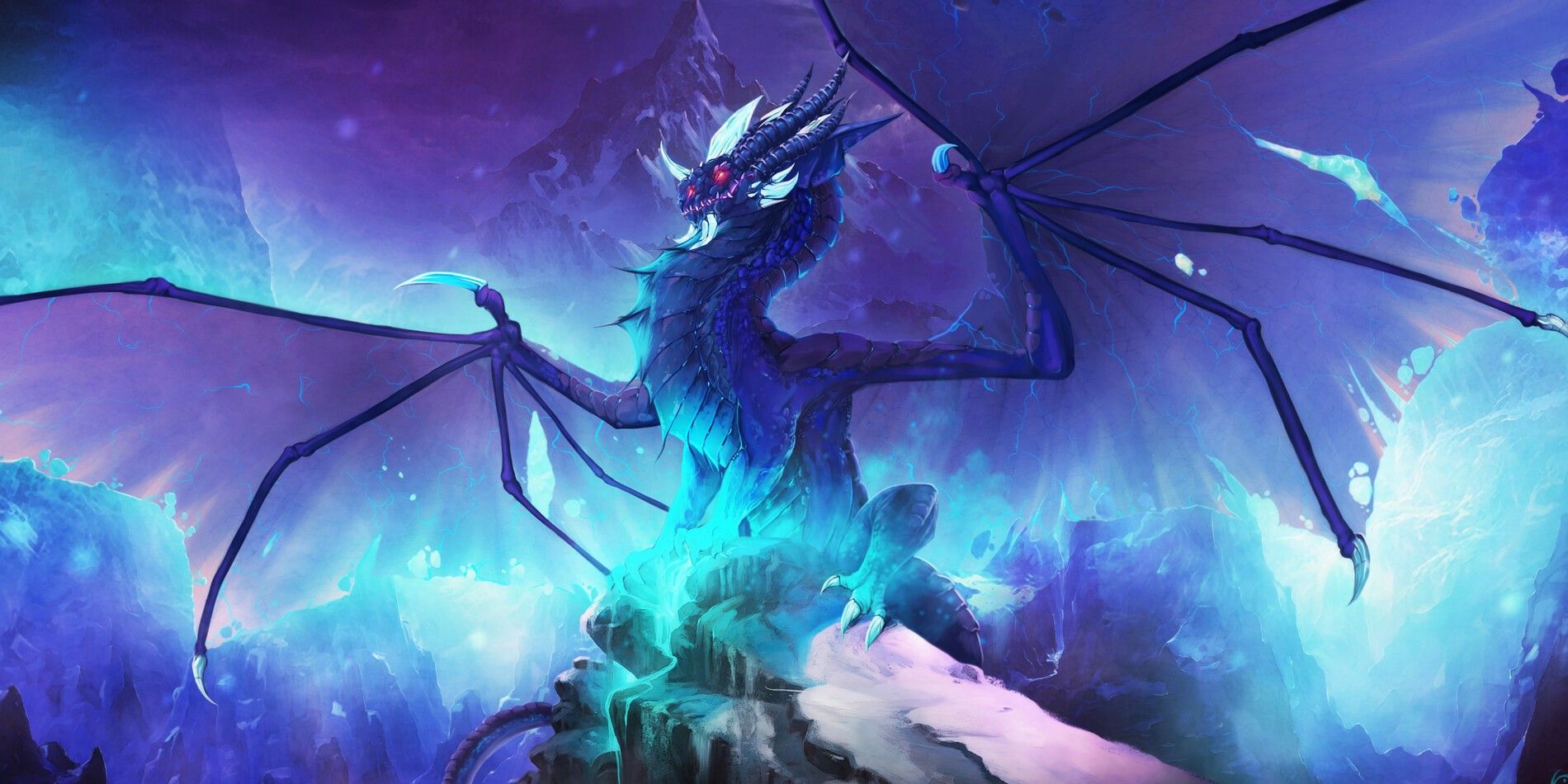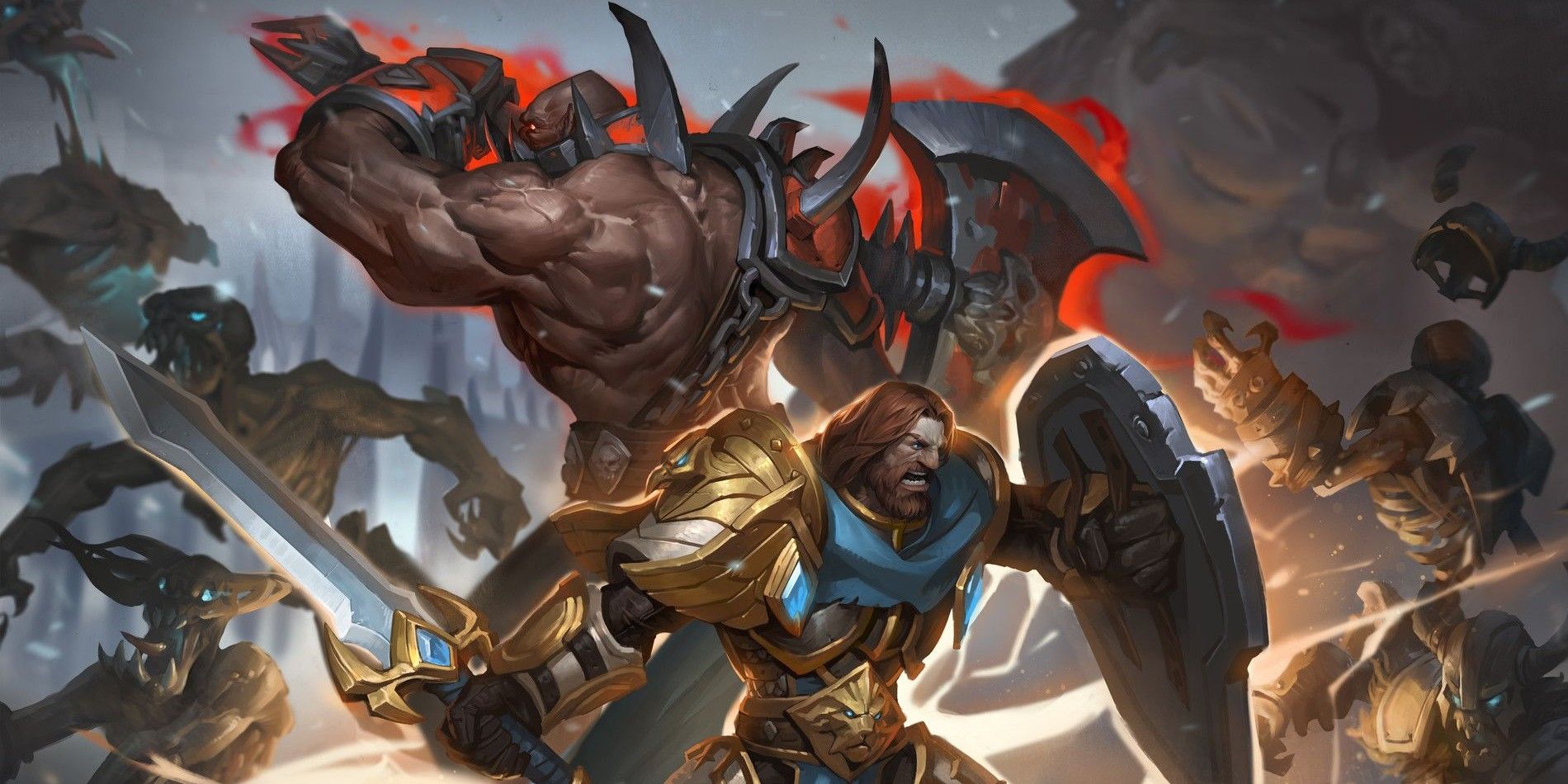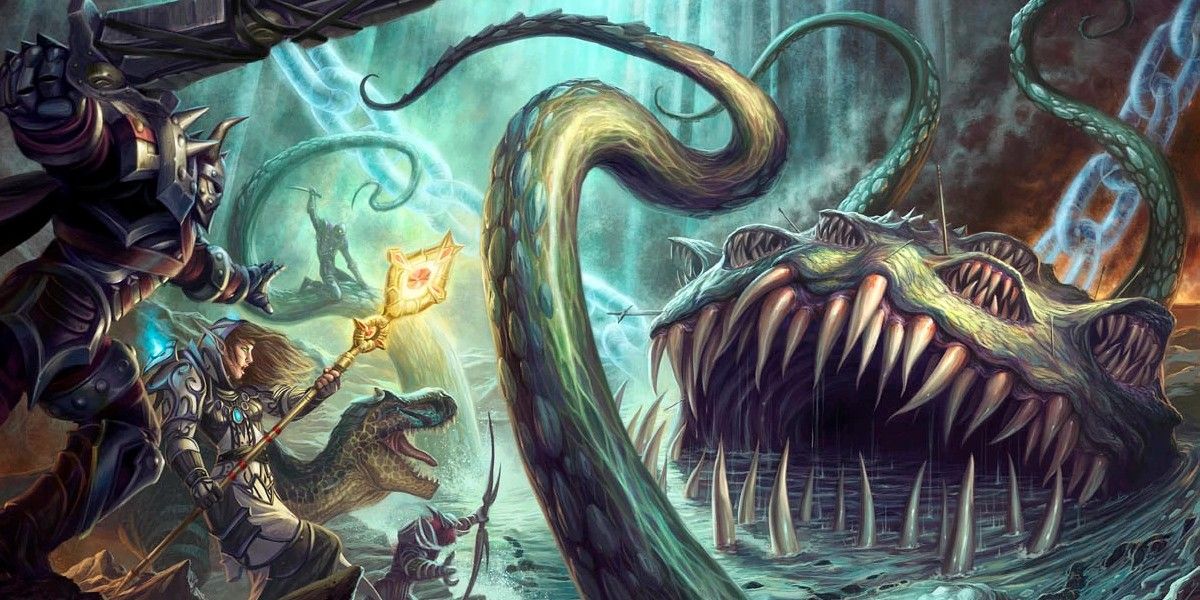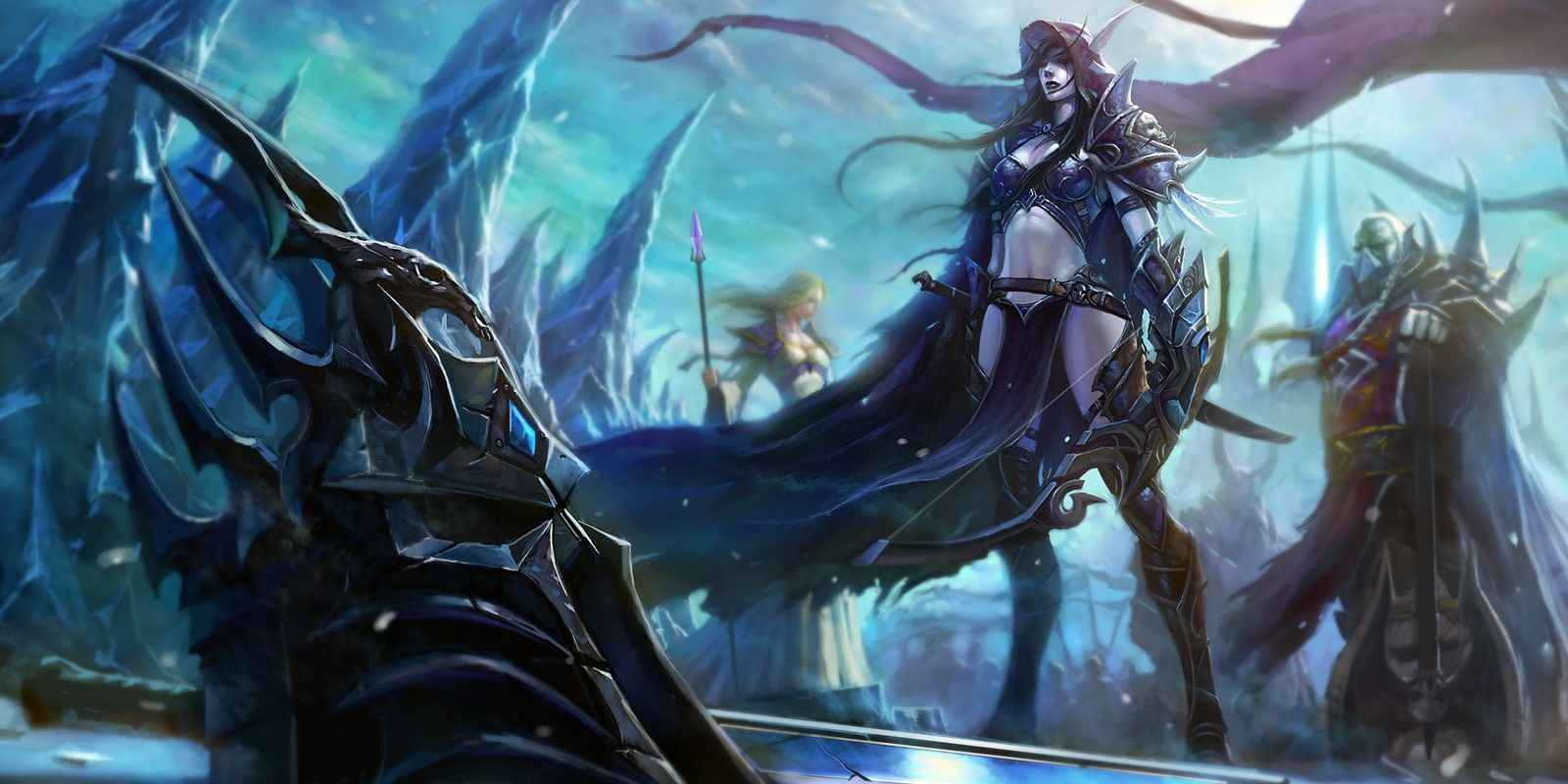Editor’s Note: A lawsuit has been filed against Activision Blizzard by the California Department of Fair Employment and Housing, which alleges the company has engaged in abuse, discrimination, and retaliation against its female employees. Activision Blizzard has denied the allegations. The full details of the Activision Blizzard lawsuit (content warning: rape, suicide, abuse, harassment) are being updated as new information becomes available.
World of Warcraft’s second expansion, Wrath of the Lich King, is fondly remembered by fans since it involved the final confrontation with Warcraft 3’s most iconic villain, Arthas Menethil. Along with a host of new raids, dungeons, quests and zones, a brand new class was also added to the game, the death knight. Much happened during the course of players’ travels in the frozen continent of Northrend, but the most important events are included here.
When Wrath of the Lich King was released, it brought with it the ability for players to become the first "Hero Class," a term given to a class that begins at a higher level than others. Before the forces of Azeroth went to Northrend, the events concerning this new class unfolded. The death knights were once unwilling servants of the Lich King who acted as the Scourge's most fearsome soldiers, their only purpose to rain terror down upon the living. A person of any race could technically become a death knight since all it would take is a powerful necromancer to reanimate the corpse, provided their brain and body were still intact. The highest-ranking death knight at the time was Darion Mograine who wielded the famous sword, the Ashbringer, after his father. He had sacrificed his own life to free his father's spirit from eternal torment, but Kel'thuzad had raised him into undead servitude, forcing him to commit terrible acts in the name of the Scourge.
A similar fate had befallen other death knights whom World of Warcraft fans could now play as via the new Hero Class in Wrath of the Lich King. A select few of these undead soldiers, the player included, eventually managed to break free from the Lich King’s control. Darion Mograine was the first to do so, giving the legendary Ashbringer to Tirion Fordring as a symbol of his commitment to bringing Arthas down. Darion established the Knights of the Ebon Blade, made up of those death knights who had reclaimed their freedom through sheer force of will, and whose knowledge of the Scourge would prove crucial to the living. Death knight players could help the Horde or Alliance using their formidable frost, unholy and blood magic to wreak havoc among their enemies.
World of Warcraft's Blue Dragonflight & The Nexus War
World of Warcraft's planet of Azeroth is protected by the dragons, ancient and magical creatures that embody aspects of the planet they inhabit. The Aspect of Magic, Malygos the Spell-Weaver, and his ilk, the blue dragons, have watched over Azeroth's precious magic for time immemorable. Malygos was imbued by the Titans with immense power and understanding regarding the dense network of arcane energy that serves as the world's very lifeblood, leylines spread all throughout the land like capillaries that culminate at his lair, The Nexus. But despite his immeasurable wisdom and intelligence, Malygos' heart had grown twisted over the eons of his existence. The great blue dragon came to the belief that all of Azeroth's troubles were caused by mortals and their reckless misuse of magic. He decided that the dragons needed to exterminate all other creatures who thought themselves worthy of using the arcane.
Chief among his targets were the mages of the Kirin Tor, centered in the city of Dalaran which now hovered over Northrend to lend aid in Azeroth's fight against the Lich King. Thus began the Nexus War, and Malygos' plan to redirect all arcane energy from the rest of the world into the Nexus, effectively draining the world dry. This caused Azeroth's crust to buckle and split apart, and the threat of worldwide extinction forced the other dragonflights to intervene. The bronze, red and green dragons joined forces with the Kirin Tor to put an end to Malygos' madness. Alextrasza the Life-Binder, Queen of the red dragons, had no choice but to put her brother down for good, helping mortal heroes to kill the once-magnificent Spell-Weaver. The Nexus War ended, but without a leader, the blue dragons were in disarray, and Azeroth no longer had an Aspect of Magic to protect it.
Confrontation at The Wrathgate & Sylvanas Windrunner Reclaims The Undercity
The Horde and Alliance were gaining ground in their effort to pierce into the very heart of the Scourge, Icecrown Citadel. One location proved a particularly difficult obstacle to overcome. To get inside, the armies of Azeroth needed to get past Angrathar the Wrathgate, a place guarded by legions of undead. The Alliance forces were led by Highlord Bolvar Fordragon, a highly respected paladin, while the Horde assault was spearheaded by Dranosh Saurfang, the young son of Varok Saurfang. WoW’s Alliance and Horde had joined forces to put an end to Arthas' reign, and things seemed to be going well, that is until Arthas himself appeared before the Wrathgate. Dranosh bravely charged ahead but was killed instantly, his soul absorbed by Frostmourne.
Meanwhile, Grand Apothecary Putress of the Forsaken had developed a strain of blight that could kill both the living and the undead, and he wouldn't miss the opportunity to show the world what it could do. Putress launched several canisters of deadly blight into the battlefield, indiscriminately devastating Scourge, Horde and Alliance soldiers alike before anyone could react. Arthas himself was forced to retreat, and Bolvar Fordragon was about to die from the poison. Instead, red dragons descended upon the Wrathgate, burning away the blight with their flames. Bolvar was badly scarred by the dragons' flame and, unbeknownst to many, subsequently taken prisoner by the Scourge.
Needless to say, both the Horde and Alliance were not particularly enamored with Sylvanas Windrunner, WoW’s leader of the Forsaken. She claimed that Putress had been acting on behalf of the Legion and not her own orders, although many doubted her alibi. According to her, Varimathras the dread lord had usurped the Undercity from her control while she was occupied in Northrend. The Horde, begrudgingly helping, and the Alliance, seeking revenge for Bolvar, stormed the Undercity and wrested control of it from Varimathras. Regardless of the triumph, the Alliance remained incensed at the devastating betrayal that had cost them so many lives.
Unlocking the Secrets Of Ulduar & WoW's Old God, Yogg-Saron
While the Horde and Alliance continued to bicker over vengeance and pride, a devil far older and more dangerous than the Lich King had seemingly awakened. Eons ago, the Titans had imprisoned several Old Gods upon Azeroth to prevent them from corrupting the planet with void magic. They left powerful constructs in charge of one of these prisoners, Yogg-Saron, but this particular Old God had spent countless ages poisoning the land around it with its own blood, spreading its maddening influence far and wide. Over time, the self-proclaimed God of Death managed to gain control of its own jailers, orchestrating a plan to free itself. Players would have to venture into the ancient city of Ulduar that was built by the Titans to be a tomb but instead had become a fortress for the unspeakable evil within.
Under constant assault from twisted, eldritch creatures and incomprehensible nightmares, Azeroth's heroes struck deep into Ulduar, rectifying the damage and uprooting the Old God's corruption. With the help of the rejuvenated Titanic wardens who had watched over Yogg-Saron for millennia, players had the power they needed to end Yogg's terrible reign once and for all. Although killing an Old God was not considered possible, much like they had with C'Thun in World of Warcraft: Classic, players destroyed Yogg'Saron's body, leaving only remnants of its influence behind to wither and evaporate without sustenance.
The Ultimate Fall Of The Lich King, WoW's Most Loved Antagonist
Hardly an expansion goes by without a reference to World of Warcraft's most iconic villain, the Lich King himself. The buildup to the last raid of Wrath of the Lich King involved storming the Scourge headquarters of Icecrown Citadel, where Arthas merged with the Ner’zhul at the end of Warcraft 3. From atop this impenetrable citadel, he orchestrated the Scourge's every move, delegating tasks to a diverse array of his most powerful minions, including the frost wyrm Sindragosa and the newly-inducted death knight, Dranosh Saurfang.
Players from the Alliance and the Horde pierced the Scourge's ranks and delved deep into the Light-forsaken halls of Icecrown, battling their way through in a desperate effort to rescue Bolvar and end Arthas' reign for good. Many major lore figures lent their assistance, such as WoW’s faction leaders from both the Alliance and Horde, Sylvanas Windrunner, Jaina Proudmoore and Varok Saurfang, among many others, all of them eager to bring the Lich King to justice. Canonically, the players actually don't manage to defeat Arthas on their own, and if not for the intervention of Tirion Fordring, Arthas would have raised Azeroth's greatest champions as undead to replace the underlings they had killed. Tirion, wielding the Ashbringer, shattered the Lich King's cursed blade Frostmourne, causing a cascade of vengeful souls to descend upon him. At that moment, Arthas met his end, and Azeroth breathed a sigh of relief.
However, without Arthas or another World of Warcraft Lich King to command it, the Scourge would still run rampant across the world, destroying everything. Bolvar Fordragon, scarred beyond recognition by the dragons' fire, volunteered to carry such a burden. He donned the infamous Helm of Domination, sealing himself within the Frozen Throne forevermore, where he would act as the barrier between the hordes of remaining undead and the innocents of Azeroth. Bolvar's noble sacrifice was kept secret, as the Highlord wanted no one to come looking for him, and thought it better that the world remembered him only as a hero who died for his people. At long last, the Scourge had been defeated, and Azeroth's heroes could return home, secure in the knowledge that they had put many great evils to rest. But as is always the case in World of Warcraft, the end of one cataclysm always leads to another.

